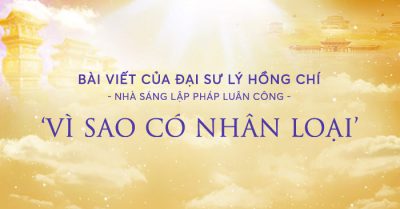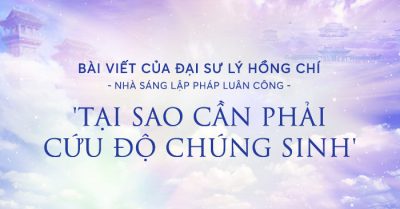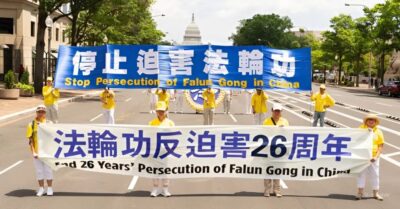Áo dài từ lâu đã là trang phục truyền thống và là nét văn hóa đặc trưng của dân tộc Việt Nam. Bài viết dưới đây sẽ giới thiệu đôi nét về lịch sử áo dài Việt Nam để chúng ta cùng tham khảo, khởi nguồn từ hình ảnh khắc trên chiếc trống đồng Đông Sơn cho thấy người Việt đã mặc trang phục có hai tà áo xẻ từ cách đây rất lâu.
*** Quý độc giả nhấn nút CC ở góc bên phải video để theo dõi phụ đề.
Most of the world recognizes the Ao Dai as the national symbol of Vietnam. Not everyone knows that to be such an iconic symbol at the moment, the Ao Dai has been through a significant evolution from where it began. Let’s dig into the story of why Ao Dai is the perfect fusion of Eastern and Western cultures. Let’s dig into the story of why the Ao Dai is the perfect fusion.
Áo Dài là một trong những biểu tượng đặc trưng của dân tộc Việt Nam trên toàn thế giới. Tuy nhiên, ắt hẳn nhiều người không biết rằng, để đại diện cho vẻ đẹp Việt Nam như ngày hôm nay, áo dài đã trải qua một quá trình lịch sử với rất nhiều biến đổi. Hãy cùng Vietcetera khám phá tại sao Áo Dài la sự kết hợp độc đáo giữa văn hóa phương Đông và phương Tây nhé.
To be honest, no one is sure when the Vietnamese Ao Dai first sprouted its roots. But there is some historical context for us to make our own conclusions. Some experts say the first sign of Ao Dai was found on antique bronze drums from the Dong Son Culture, before Han Chinese influence. Other experts believe it appeared 40 AD introduced by the Trung Sisters. These two heroines led a revolution against the Chinese Han dynasty, and marked Vietnam’s initial independent state. So when was the exact time that Ao Dai was first introduced?
Trên thực tế, không có một bằng chứng khoa học chính xác về thời điểm ra đời của Áo Dài. Tuy nhiên, một số nhà sử học cho rằng dấu hiệu đầu tiên của Áo Dài là hình ảnh người mặc trang phục với hai tà xẻ đôi trên mặt chiếc trống đồng Đông Sơn, lúc này vẫn chưa bị ảnh hưởng bởi văn hóa Trung Quốc. Một số người khác cho rằng Áo Dài khởi nguồn từ câu chuyện Hai Bà Trưng chống lại thực dân Hán đô hộ, tức vào khoảng năm 40 TCN. Vậy, chính xác Áo Dài bắt đầu có từ khi nào?
Evidence shows it wasn’t until 1774 that Ao Dai began to make a lasting impression on society. Vietnam was actually divided into tow regions at that time. The northern lords of Hanoi forced their subjects to wear garments called Ao Giao Linh reminiscent of Chinese robes by Han people including a front buttoned gown and skirt. While the southern regions of Vietnam demanded that members wear trousers covered by a long silk gown inspired by Champa style attire.
Sử sách ghi chép rằng Áo Dài được giới thiệu vào năm 1774, khi đất nước bị chia cắt thành hai lãnh thổ. Chúa Trịnh ở Hà Nội ra lệnh cho người dân mặc áo Giao Lĩnh, có ảnh hưởng bởi trang phục của người Hán, gồm bốn vạt, hai thân trước giao nhau mà không buộc lại, mang kèm với váy. Trong khi đó, ở miền Nam, chúa Nguyễn bắt dân chúng mang áo Giao Lĩnh với quần, ảnh hưởng bởi trang phục của người Chàm.

Later on, southern people shortened the gown to wear with trousers, called Ao Ba Ba. While the northern version saw the first major evolutionary phrase of the Ao Dai we know today. Shifting in order to differentiate between two distinct social classes. The garb most widely worn by upper class women during the 1800s was the Ao Ngu Than. A five-panel gown consisting of four outer panels, two in the front sewn into one piece, an two in the black. Adding collar detail along with a hidden baby flap, an alternative to the bra, which was not yet invented at the time. Also the first time the dress had two slits on each hip, which later becomes the stand out feature of Ao Dai that remains today. On the other hand the working class wore a new, more tidy, functional design called Ao Tu Than, or four-panel gown. In short, Ao Tu Than is another version of Ao Ngu Than. With the two back panels sewn into one piece. The front panels were not connected, but could be tied together. As was typical for the lower class clothing at the time, the four-panel gown is often in dark colors. Overall, the two dresses initially had much looser silhouettes and were also much shorter than the Ao Dai we see now since people were not yet equipped with modern sewing tools
Sau này, người miền Nam rút gọn áo Giao Lĩnh gọi thành áo bà ba để mang chung với quần. Cũng ở giai đoạn này, áo giao lĩnh miền Bắc cũng có những thay đổi nhất định nhằm phân biệt giai cấp. Những năm thuộc thế kỷ 19, giai cấp tư sản thường mang áo Ngũ Thân, gồm 2 vạt trước và sau, mỗi vạt có hai thân nối sống, vị chi thành bốn, và một tà con thứ năm dưới vạt trước, mang với yếm. Đây cũng là lần đầu váy được xẻ hai bên hông, chi tiết đặc trưng của Áo Dài tồn tại đến hôm nay. Giai cấp lao động thường mang áo tứ thân. Áo Tứ Thân là phiên bản khác của áo Ngũ Thân. Vạt sau gồm hai thân nối sống, vạt trước gồm 2 tà để thỏng, hoặc cột lại, và thường có màu tối để phù hợp trong công việc đồng áng. Nhìn chung, Áo Dài ở giai đoạn này có dáng rộng, và ngắn hơn Áo Dài hiện đại do kỹ thuật may còn thô sơ.

Moving into the early 20th century, the Ao Dai silhouette is fairly loose, with an open collar which allowed the women to show off any necklaces they might wear. In the next period, 1930’s to 1950’s, a French colonization had brought a Western influence into Vietnam. The Hanoian artist, Cat Tong, aka Le Mur, varied Ao Dai into many different silhouettes, taking inspiration from Western fashion. Le Mur tightened up the Ao Dai to fit from of the Vietnamese woman’s body. He raised the shoulders, extended the dress to reach floor length, changed to a brighter color scheme and added Western details like puffy sleeves, heart shaped collar and a bow.
Đến đầu thế kỷ 20, Áo Dài vẫn mang dáng rộng, với cổ xẻ để lộ trang sức của người mặc. Giai đoạn từ năm 1930-1950, thực dân Pháp đô hộ mang văn hóa phương Tây du nhập vào Việt Nam. Lúc này, nghệ sĩ Cát Tường, được biết đến với nghệ danh Lemur, phác họa Áo Dài với nhiều kiểu dáng khác nhau. Áo Dài Lemur ôm sát cơ thể, dài đến mắt cá, có màu nổi bật và thêm thắt các chi tiết trang phục phương Tây, như tay phồng, cổ tim có nơ.

In short, he made it sensual, flattering and appealing to the eye. The design gained popularity over the next four years, but still some claimed that the design was too sexy, and not appropriate to the Vietnamese culture. So after that, Ao Dai Le Mur was adjusted to painter, Le Pho, to be more traditional. Hut cut off the puffy sleeves and replaced with the details from Ao Tu Than and Ao Ngu Than. From that point on until the 1950’s, his version of Ao Dai with the two flaps tied to the body and closed at the neck, remained popular as it was accepted by the more conservative ideology at the time.
Lemur khiến Áo Dài trở nên gợi cảm và bắt mắt. Tuy nhiên, thiết kế này vấp phải sự phản đối của nhiều người sau 4 năm vì không phù hợp với văn hóa Việt Nam. Sau đó không lâu, nghệ sĩ Lê Phổ lại biến tấu Áo Dài với nhiều nét truyền thống hơn. Bỏ đi phần tay áo phồng và thêm vào các chi tiết của áo Tứ Thân và áo Ngũ Thân. Từ năm 1950 trở đi, Áo Dài Lê Phổ với 2 tà ôm sát cơ thể và cổ hẹp trở nên phổ biến vưa thoải mái vừa mang đậm giá trị truyền thống.
However, around the late 1950’s the United States had replaced France as the occupying force. In 1958, Tran Le Xuan, the wife of the President’s chief advisor, made a controversial fashion statement by wearing a V-neck collared dress, with short sleeves and gloves. And through some praised her for her elegant take on the costume, many others were offended and felt this action was done in poor taste. The distaste for the modern version was so strong that the government banned the dress, as it appeared to serve as an acceptance of capitalist ideals. But was the ban effective? Not really, in fact it was in the 1960’s that Ao Dai gained the highest level of popularity. Especially in Southern Vietnam, since Sai Gon designer Dung Dakao revolutionized the dress again with the addition of raglan sleeves. The front panel of the Ao Dai was connected by buttons, lined from the collar to the armpit and continuing down to the side of the hip. With this innovation, the dress showed fewer wrinkles, lying flat on the female body with still feeling comfortable in movement.
Tuy nhiên, năm 1958, khi Mỹ thay Pháp xâm lược Việt Nam, bà Trần Lệ Xuân, vợ cố vấn chính trị cho tổng thống thời bấy giờ, đã gây ra một cuộc cách mạng thời trang đầy tranh cãi khi kết hợp Áo Dài cổ truyền, tay ngắn với găng tay. Một số người cho rằng Áo Dài bà Nhu sang trọng, một số khác lại phản bác rằng không hợp thuần phong mỹ tục. Làn sóng tranh cãi gay gắt đến nỗi Áo Dài bị cấm vận ngáy sau đó. Nhưng lệnh cấm này có tác dụng không? Không đâu, vì lúc này, ở miền Nam, Áo Dài đã trở nên thịnh hành hơn bao giờ hết khi nhà may Dung Dakao đưa cách ráp tay raglan vào Áo Dài. Với cách ráp này, tay áo được nối từ cổ xéo xuống nách, tà trước nối tà sau qua hàng nút bấm từ cổ xuống nách và dọc theo một bên hông. Kiểu ráp này khiến áo trở nên phẳng phiu, ôm khít thân hình người mặc.

The 1970’s and early 80’s witnessed the country’s reform period, Doi Moi along with the wave of hippy culture embracing the philosophy “Live fast.Die young” . Ao Dai was modernized with a mini version, lighter materials, vivid colors, patterns of plants, flowers and geometric shapes. The bodice was sewn narrow and short to the knees, with wide body, low collar and long trousers with wide bell-bottoms up to 60cm. This trend was popular until the mid 90’s.
Thập niên 70, 80, Việt Nam chuyển sang giai đoạn đổi mới, cũng là lúc du nhập làn sóng văn hóa Hippie với trào lưu “Sống hết mình”, Áo Dài được cách tân với các phiên bản ngắn hơn, chất liệu nhẹ, nhiều màu sắc sặc sỡ, nhiều họa tiết cây cỏ, hoa văn và hình học. Tà áo ngắn tới gối, thân rộng, cổ thấp và quần ống loe tới 60cm. Trào lưu này thịnh hành đến tận những năm 90.

In the 21st century, although being worn less on a daily basis, Ao Dai still remains aas a national symbol of grace, beauty, cultural pride and Vietnamese creativity. Designer Si Hoang illustrates Vietnamese paintings as patterns on his Ao Dai, while Minh Hanh is famous for using hill tribe fabric. Recently Thuy Nguyen reinvented Ao Dai with her unique silhouettes and her exclusive use of Vietnamese silk brocade.
Bước vào thế kỷ 21, mặc dù ít ứng dụng trong cuộc sống thường nhật, Áo Dài vẫn mãi là biểu tượng quốc gia của sự duyên dáng, vẻ đẹp truyền thống và sự sáng tạo của người Việt Nam. Ví dụ như nhà thiết kế Sĩ Hoàng sử dụng tranh vẽ Việt Nam như họa tiết trên thân áo, hay nhà thiết kế Minh Hạnh với việc sử dụng chất liệu thổ cẩm dân tộc. Và gần đây nhất là nhà thiết kế Thủy Nguyễn với áo dài cách tân trên chất liệu gấm truyền thống.
As a whole, the Vietnamese Ao Dai is a dress that everyone, including men, can customize to fit their own taste and figure. From high fashion to tradionallist and everything in between, there is no doubt why this dress is such a treasured element of Vietnamese culture.
Có thể nói, từ xưa đến nay, Áo Dài vẫn luôn là trang phục phù hợp với tất cả mọi người, cả nam và nữ và dễ dàng thay đổi theo sở thích với phom dáng mỗi người, xứng đáng là kho báu của dân tộc Việt Nam.

Theo Vietcetera
 Đại Kỷ NguyênTin tức thời sự quốc tế cập nhật 24/7, văn hoá truyền thống
Đại Kỷ NguyênTin tức thời sự quốc tế cập nhật 24/7, văn hoá truyền thống





























































